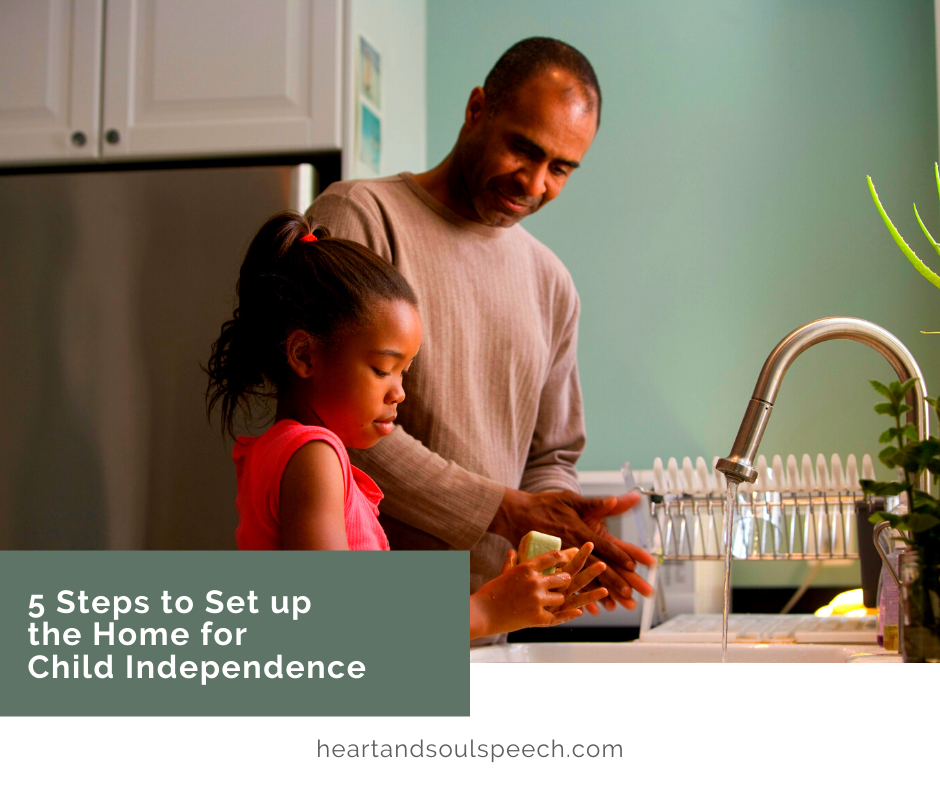
Be sure to download the free worksheet to jump start setting up your home for your child’s independence, complete with examples!
It used to seem like my toddler would need my help for Every. Single. Thing while we were at home. He would become angry when I couldn’t help immediately. He started giving up trying because it was “too hard.” I began to make a note of everything he asked and noticed a pattern. It usually wasn’t because he didn’t have the skills to do it himself.
It was because he didn’t have the access.
His environment simply wasn’t set up for his independence. It was set up for mine. Most times I just did it for him, denying him the opportunity to practice those skills needed to learn.
Children truly want to be successful and independent in the things they do. They often have a natural way of challenging themselves just enough when guided by a prepared environment. We can offer spaces at home that is set up for them to learn without our help.

When there’s a disruption to your daily routine – ask yourself these questions: Could this be due to ability or accessibility? Does he not yet have the skills to do the task, or is the environment preventing him?
Making Simple Changes at Home
Making changes in your home doesn’t have to be hard. You can increase your child’s independence at home with these 5 simple steps.
1. Consider the problem
Observe your child throughout the day. Where does your child seem to need the most help? Think about which areas of your home disrupt your desired daily routines.
- I have to help him wash his hands because he can’t reach the sink.
- Cooking dinner feels impossible when she wants my attention.
- Toys are constantly everywhere, yet he doesn’t seem to really play with them, and certainly doesn’t help clean up.
- The entry way is a drop zone mess of shoes, bags, and coats.
2. Choose a space in your home
The main spaces to prepare are often the child’s bedroom, bathroom, family living space or play space, and kitchen. Don’t overwhelm yourself with doing it all at once – just solve one problem at a time.
3. Observe your child in that space
Make a note next time your child is completing a routine in that space. What does she ask for help with? Take time to get down to their eye-level and consider the space in their perspective. What could he do himself if the environment was better prepared for his independence?
4. Make a plan
Consider the routine you are addressing, or the routine you would like to set up. How can you make it simple for the child to do without your help? Perhaps it adding hooks to the entry way for coats and a basket for shoes. Maybe setting up a play dough station at the dinner table would keep them busy while you cook. Try providing visual schedules to help your child get ready for bed. [We love these free visual schedules by Living Well With Autism.]
5. Prepare the space and teach the routine
Set up your space keeping your solutions in mind. Guide your child through the new routine. You can make it special by sharing this space is set up especially for your child. “Look how you can do this all by yourself now!” Gradually fade your help until your child is able to complete the routine in the prepared space independently.
That’s it – you can do this! 5 easy steps to making your daily routines more simple and inviting your child to practice more independence. Which space will you prepare first?

One Response